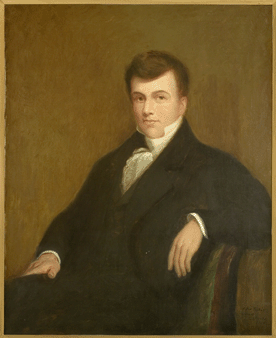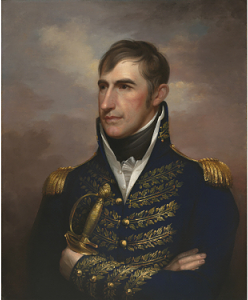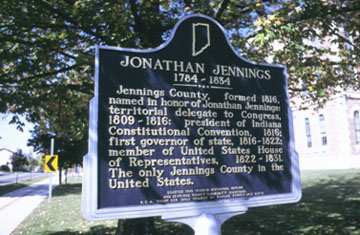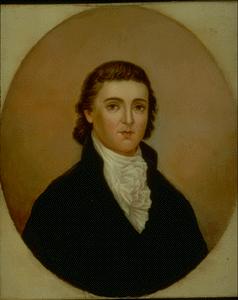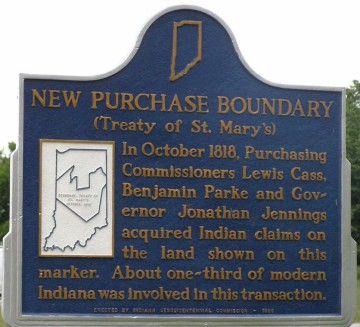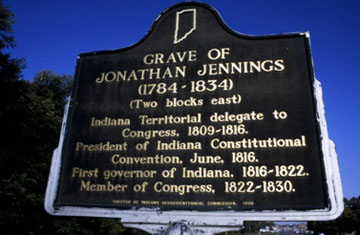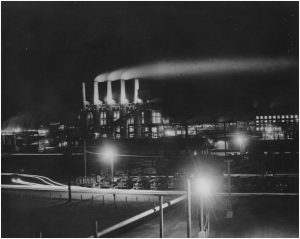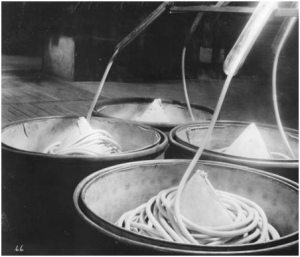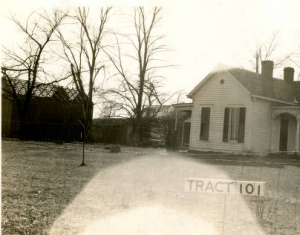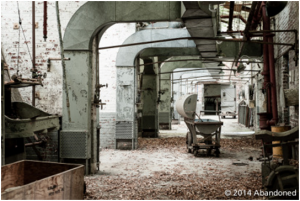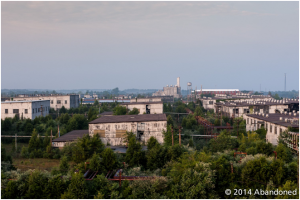
The San Francisco Chronicle asked Americans “who have a wide experience and many points of contact with 1922” to predict the trials and triumphs Americans would experience 100 years later.* Probing prominent individuals like a pastor, architect, social reformer, author, film producer, educator, and politician, the paper concluded that there are “plenty of ifs and buts, but in general the prospect for a century hence seems rosy.” As a historian at the dawn of 2022, some of the predictions seem amusingly off-base, like author and critic Henry L. Mencken’s certainty that the U.S. “will be a British colony. . . . The American who will be most agreeably discussed by Anglo-American historians in 2022 will be Woodrow Wilson, the first premier of the United American Colonies.” Notorious moving picture producer D.W. Griffith was equally shortsighted when he stated, “I do not foresee the possibility of instantaneous transmission of living action to the screen within 100 years.” (Inventor-turned reluctant Fort Wayne businessman Philo Farnsworth would transmit the first “electronic television image” just a few years later in California).
Some musings proved surprisingly prescient, like those of architect Thomas Hastings, who wondered, “Will civilization relapse, perhaps through the medium of another world war, into semi-barbarism?” The telephone was only just beginning to be used in households—World Wide What?—when Hastings urged readers to consider “the probability of revolutionizing inventions—even the discovery of forces which we know nothing about now.” Famed birth control activist Margaret Sanger—who reportedly called upon Indianapolis reformer Roberta West Nicholson to help found the city’s first Planned Parenthood clinic—was arguably correct in her belief that access to birth control would result in:
happier homes, greater mutual respect between husband and wife, honeymoons lasting two or three years before children arrive, with husband and wife thoroughly equilibrated to one another, because there has been time for mutual understanding and development before parenthood is entered upon.

Among the soothsayers was Mary Garrett Hay, a Charlestown, Indiana native, trailblazing suffragist, and, by 1922, head of New York City’s League of Women Voters. The accuracy of her predictions prompt a look back at her life and career, both of which were far ahead of her time, so to speak. Hay informed the San Francisco Chronicle that in 2022:
The life of even the average woman will be broader and better. Woman’s drudgery in the household will be eliminated, her care of the family will be lessened, as new inventions come in and new methods of work. Women, like men, will do the tasks for which they are best fitted by temperament, gifts and training.
Technological advancements have certainly liberated women from household drudgery. And women have increasingly stepped away from the home and into the public sphere due to a redefinition of the “tasks for which they are best fitted by temperament, gifts and training.” Hay occupied this sphere throughout her life, beginning around 1880, when as a young woman she worked as a drug clerk in Charlestown.[1] Hay later supported herself as a writer, reform speaker, and political consultant in New York City, having eschewed the institution of marriage and accompanying division of labor (Again defying gender norms, she had a long-term relationship with renowned suffragist Carrie Chapman Catt).
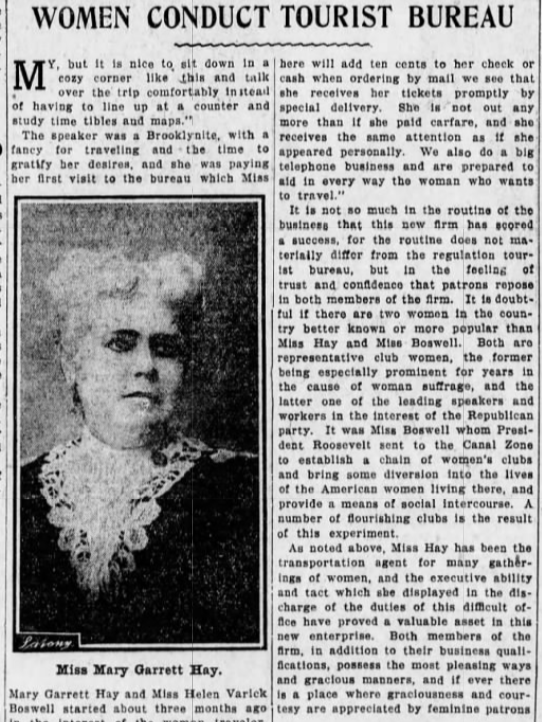
Described as a “born executive,” Hay flexed her entrepreneurial skills when in 1908 she formed the Women’s Travel Bureau. Drawing on twenty years of navigating railroad networks across the U.S. for her suffrage campaign, Hay formed a company that appealed to the unique needs of female travelers, such as featuring safe accommodations and advertising women’s events. Hay told the New-York Tribune that since the 1893 Columbian Exposition, women increasingly used rail travel for a brief reprieve from the demands of family life. This was made possible, she said, because “‘women have for the first time in history begun to earn good salaries.'”[2] The Travel Bureau is one of many examples of Hay carving out opportunities in a male-dominated field by pairing her expertise with public demand.
While Hay’s prediction alluded to shifting gender norms, she made clear in the Buffalo Times that the shift must be more immediate, telling the paper, “‘It is the right of every human to have a career in the home and in the field-and the two are not mutually exclusive.'” She stated bluntly, “‘If men are willing to let their wives go out in quest of careers in the field as well as in the home they are reasonable husbands.'” The paper added that Hay “advocates women taking paid positions even after they are married and employing servants to do the housework far more efficiently than they could ever do it themselves.” In 1926, she argued that not only should women be allowed in the workforce, but that some were better suited for it than the home, noting:
I’ve known many women who were very inefficient mothers but excellent business women. They could manage what we call a man’s job and make a conspicuous success of it, and be absolutely beaten by housework or the rearing of their children.[3]
Of course, in order to work in the professional field, jobs needed to be available. Hay worked to create these as a member of the Committee for Extending Business Opportunities to Women, formed around 1915, because “the entrance of women into various fields of work has been effected with so much difficulty.”[4]
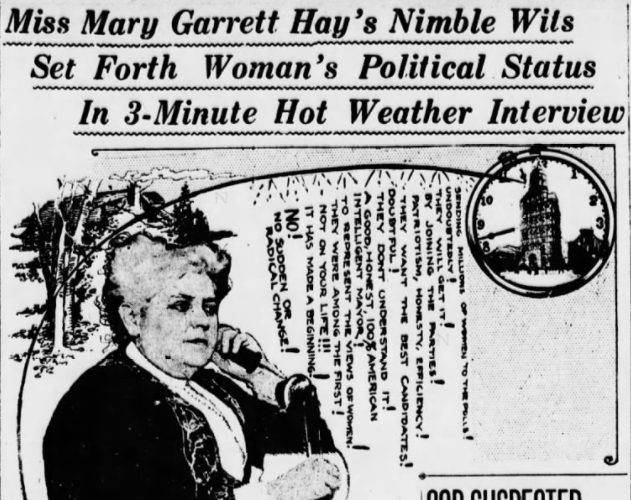
In the second half of her prophesy for the San Francisco Chronicle, Hay predicted:
Politically, women will be powerful. They will share with men the real constructive work of government. Many will hold office. If there is not a woman President, the thought of one will shock no one. It will seem natural and proper to elevate women to whatever positions they have the ability to fill. Co-operation will be the magic word in 2022.
Confirming Hay’s point, many Americans in 2016 were shocked not that Hillary Clinton was poised to become the country’s first female president, but that she lost the election in a stunning upset—despite winning the popular vote. The glass ceiling came closer to being shattered when Kamala Harris was elected the first female U.S. Vice President in 2020 and when she briefly became the first woman imbued with presidential power in 2021 when President Joe Biden went under anesthesia for a medical procedure.
In fact, Hay’s own name had been floated as a U.S. presidential candidate in the 1910s. This was, in large part, because of her organizational and political prowess, particularly in recruiting members for the Republican Party.[5] Described as “the big boss of New York,” the G.O.P. appointed Hay to influential positions, soliciting her insight about issues important to women and strategies for mobilizing them to the polls.[6] Friend and fellow Hoosier— and Warren Harding’s presidential campaign manager—Will Hays appointed her chairman of the Republican Women’s National Executive Committee.[7] In this role, she was tasked with organizing “the women in the nation for the Republican Party as she had organized for suffrage. She was sought after at all political gatherings, and was made a delegate to every kind of convention.”[8]
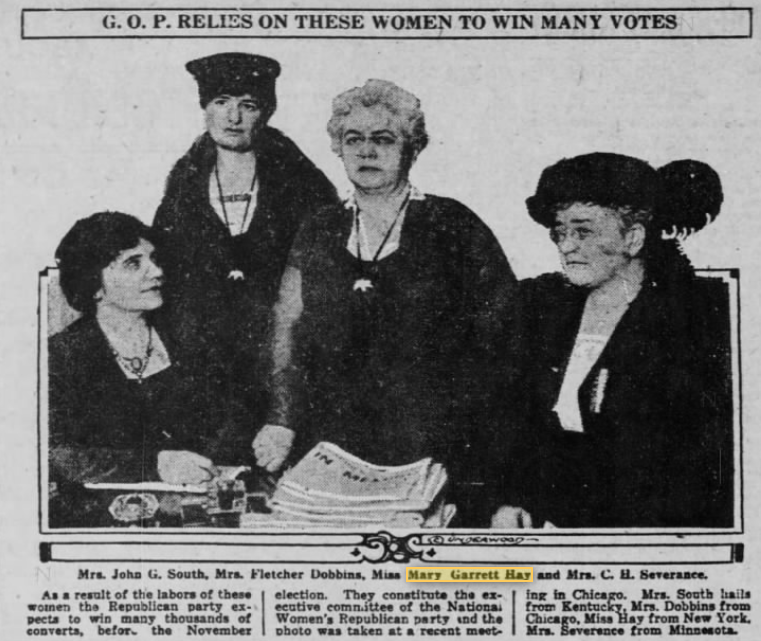
From lobbying for Indiana W.C.T.U. branches to heading a West Coast speaking tour organized by Susan B. Anthony to bringing to the Albany legislature “tenement house suffragists to illustrate how much women need the vote on the lower East Side,” Hay evolved from a social reformer to a political organizer.[9] She envisioned women’s influence extending beyond ratification of the 19th Amendment and viewed the political realm as a source of women’s professional fulfilment.
In her “Politics, A Profession for Women” essay for Catherine Filene’s 1920 Careers for Women, Hay wrote that politics “lacks the stultifying effect attaching to most occupations for women. Politics for women means a life of real vitality and worth.” She noted that “women who were trained by suffrage campaigns” were qualified for “good positions” within political parties. Strengths inherent to women, Hay argued, intersected well with those required of the political sector, such as the “ability to judge and handle people . . . sagacity, resourcefulness, power to discern the true from the false, common sense, imperturbability, [and] wide experience with human nature.” Having earned a reputation as an exceptional orator, Hay delivered a speech in 1926 in which she stated governmental work was tantamount to “housekeeping on a large scale.”[10] Because of these convictions, Hay used her sway within the Republican Party to bring more women into politics, although, the Times-Tribune noted, “she frequently found herself a[t] storm center by her insistence that leaders of the party permit women workers to join in the inner councils.”[11]
While she predicted that “Politically, women will be powerful,” Hay wanted not only “political equality between the sexes,” but “equality in every single thing in life.” This sentiment paralleled U.S. Supreme Court Justice Ruth Bader Ginsburg’s belief that “women belong in all places where decisions are being made.”[12] Hay worked for their systemic inclusion, including in higher education, law enforcement, jury duty, and prison reform.[13]
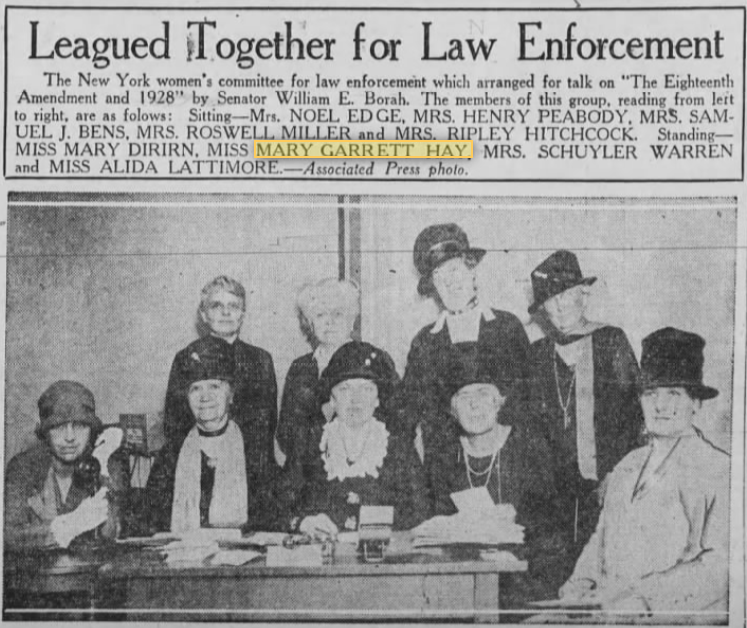
In this sense, Hay’s approach to equality was unique for the period, as historian William O’Neil argued, “’the postsuffrage feminists failed to see that the woman problem was part of a larger social question involving sex roles in American society and the entire order.’” Furthermore, these reformers “’asked only for legal equality without addressing themselves to the whole range of problems facing women who tried to make a notch for themselves in a man’s world.’”[14] Hay, “one of the best known leaders in the fight for the emancipation of women,” proved the rare exception.[15]
Her 1928 death would exacerbate this void in leadership for women’s equality. But in the nearly 100 years since her passing, her vision has been realized to a meaningful extent, as women increasingly occupy significant roles in the workplace and government. Perhaps she was able to envision the ideals and gender norms that would become fairly commonplace by 2022 because she embodied them herself.
Sources:
This post draws on the research notes for the Mary Garrett Hay historical marker.
* Unless otherwise specified, all material is drawn from the San Francisco Chronicle, January 14, 1923, p. 10, accessed via Newspapers.com.
[1] “Mary G. Hay,” Clark County, Indiana, Census, 1880, accessed Ancestry Library Edition.
[2] Departure of Trains Schedule, National American Woman’s Suffrage Association, New Orleans, March 19th to 25th, 1903, Miller NAWSA Suffrage Scrapbooks, 1897-1911, Scrapbook 3 (1897-1904), Rare Book and Special Collections Division.; “Women Conduct Tourist Bureau,” Brooklyn Daily Eagle, June 21, 1908, 24, accessed Newspapers.com.; “Women Who Travel,” New-York Tribune, August 4, 1908, 5, accessed Newspapers.com.
[3] Cynthia Grey, “Cynthia Says Home and Country Should Be Managed Jointly,” Courier-Post (Camden, NJ), April 19, 1926, 9, accessed Newspapers.com.
[4] “Mary G. Hay,” Clark County, Indiana, Census, 1880, accessed AncestryLibrary.; “Mary G. Hay,” 1910 United States Federal Census, New York, accessed AncestryLibrary.; “Women Form to Open New Fields,” Woman’s Journal and Suffrage News, January 2, 1915, accessed HeinOnline.
[5] Joan Moody, “What Will They Do With It?,” Everybody’s Magazine (November 1919): 113, accessed GoogleBooks.
[6] “Cheers Greet Women as They Enter Politics,” Indianapolis Star, April 3, 1919, 1, 8, accessed Newspapers.com.
[7] “Mary Garrett Hay’s Watchword to Women in Politics Was: ‘Be Nice to the Men’; Fought for Suffrage from Girlhood,” Brooklyn Eagle, September 2, 1928.
[8] Indianapolis Star, April 3, 1919, 1, 8.; Brooklyn Eagle, September 2, 1928.
[9] “Suffrage Leaders Get Together Now,” Star-Gazette
(Almira, NY), March 5, 1910, 2, accessed Newspapers.com.
[10] Cynthia Grey, “Cynthia Says Home and Country Should be Managed Jointly,” Courier-Post (Camden, NJ), April 19, 1926, 9, accessed Newspapers.com.
[11] “Mary Garrett Hay,” The Times Tribune (Scranton, PA), September 1, 1928, accessed Newspaper.com.
[12] “They Will Stand on Their Rights,” Boston Globe, February 27, 1908, 10, accessed Newspapers.com.
[13] “Mainly About People,” Daily News (New York), January 6, 1922, 41, accessed Newspapers.com.; “Women and the Jury System,” The Scranton Republican, February 28, 1922, accessed Newspapers.com.; “Leagued Together for Law Enforcement,” Oakland Tribune, November 29, 1927, 28, accessed Newspapers.com.
[14] Quoted in Winifred D. Wandersee, Women’s Work and Family Values, 1920-1940 (Cambridge: Harvard University Press, 1981), 119-120.
[15] Buffalo Times, July 9, 1922, 52, accessed Newspapers.com.

